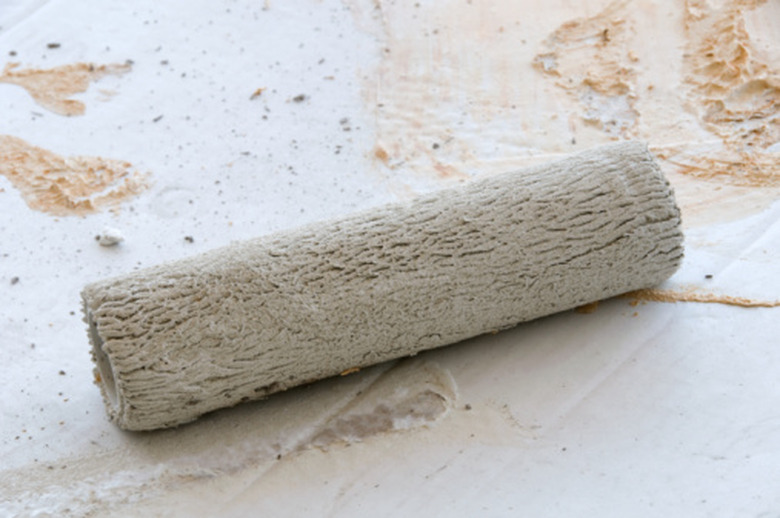How To Mud Over Wallpaper
Things Needed
-
Thinned joint compound
-
Tight-nap paint roller
-
Extension pole
-
Large paint roller pan
-
14-inch drywall taping trowel
-
Drywall sander
-
Goggles
Tip
Mud over wallpaper only as a last resort. If it's at all possible to strip the paper, do so.
Warning
Wear protective eye wear to protect your eyes from splatters of drywall mud.
Wallpaper brightens up a room and adds an element of style, unless you don't like the pattern or the color. If you want a plain wall and you've tried in vain to strip off the old wallpaper, you may be able to mud over it. Before you can skim coat wallpaper with a layer of joint compound, you must test the procedure in a small area. The results will determine whether you can mud the wall or if you have to strip off the stubborn paper.
Step 1
Test the wall by rolling a thin coat of thinned joint compound onto the wall with a paint roller. Roll on at least a three-foot square area and wait.
Step 2
Watch the test area as the mud dries. If the old wallpaper bubbles or loosens from the wall, you cannot mud over it. If the compound dries flat with no peeling, you may mud the wall.
Step 3
Thin joint compound by adding enough water until it reaches a pancake batter consistency. Stir well to blend out any lumps. Pour it into a large paint roller pan.
Step 4
Roll a thin coat of compound over the wallpaper in a three-foot swath, starting at the edge of the wall. Bryan Tradem, author of "Working with Drywall," advises using a tight-nap roller, fitted onto an extension pole to apply the mud.
Step 5
Smooth out the wet mud with a 14-inch drywall trowel, starting at the top of the wall and pulling the trowel downward to smooth the mud evenly. It helps to have an assistant for this step. One of you can roll on the mud, and the other can follow behind and trowel the wall smooth.
Step 6
Let the mud dry completely; it' will become white and solid, like chalk, as it dries.
Step 7
Sand the dry mud smooth with a drywall pole sander.
Step 8
Apply another thin coat of mud the same way you applied the first coat, and let this one dry as well. Repeat the sanding and application process as many times as needed to cover the old wallpaper with a smooth new coat of mud.
References
- "Working With Drywall"; Bryan Tradem, 2009
- Painting and Decorating Concourse: Drywall Surface Preparation: Skim Coating
